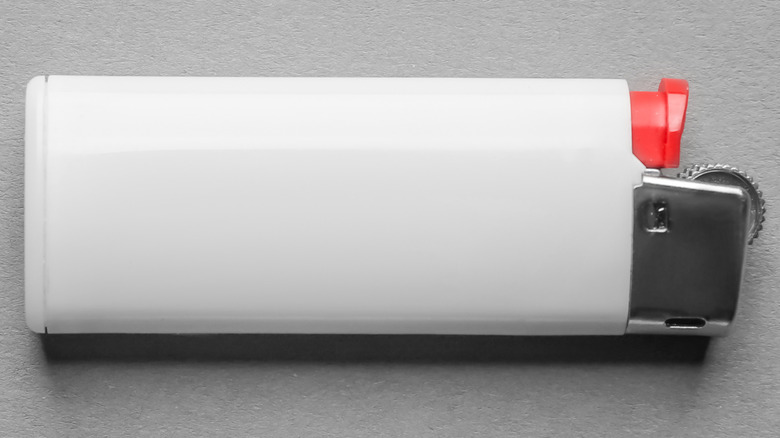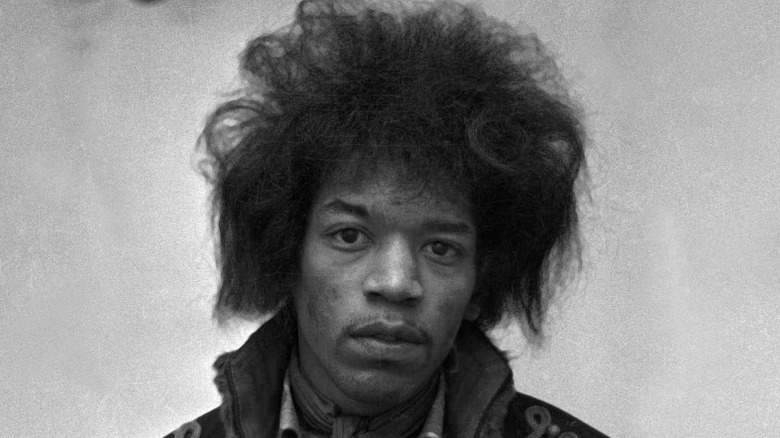How A Rumor About The 27 Club Started A Chilling Superstition
The infamous "27 Club" has a long list of celebrity members, including famous musicians, actors, and other entertainers. For membership, you only need to meet two qualifications. First, you have to be famous. Second, you have to die during your 27th year.
The club, as it were, began to gain attention shortly after the 1994 death of Nirvana frontman Kurt Cobain. But the name "27 Club" was first coined as far back as 1969, after the death of Rolling Stones guitarist Brian Jones (via SpinDitty). Rolling Stone determined that there were 71 official members, all of whom expired at the age of 27. Beginning with Delta Blues legend Robert Johnson, the list is largely a who's who in music. Janis Joplin, Jim Morrison, Jimi Hendrix, Amy Winehouse, and other familiar names dominate the list. But musicians aren't alone, as the list features the likes of artist Jean-Michel Basquiat and actors Jonathan Brandis and Anton Yelchin.
The causes of death vary greatly, ranging from murder (Arlester "Dyke" Christian of Dyke and the Blazers, via The Buffalo News, and Mia Zapata of The Gits, per The Seattle Times) to car wrecks (D. Boon of The Minute Men, per The LA Beat) to drowning (Brian Jones, per Rolling Stone). Suicide and overdoses are the two most common ways that members made the list, making its existence all the more tragic. One item in particular has pervaded the many myths surrounding the 27 Club, however. An innocuous, everyday item that many people carry in their pockets is thought by some to be the harbinger of death, with the superstitious among us avoiding possessing it altogether.
A white cigarette lighter is supposedly bad luck
The item that four members of the 27 Club were said to have been carrying is none other than a white cigarette lighter. A quick internet search will yield various accounts of how Jimi Hendrix, Kurt Cobain, Janis Joplin, and Jim Morrison all were carrying one on them when their bodies were discovered. The white lighters are supposedly mentioned in each of their autopsy reports, making this rumor seem all the more official (via Entity Magazine).
Adding to the white lighter supposedly being a harbinger of death is the dead giveaway it can be to police when searching a subject. Those who are no stranger to smoking pot will know that the end of a cigarette lighter is often used to pack a bowl with a fresh refill of marijuana. The contact with this end of the lighter gets it exposed to ash, which will discolor it over time. This signals to law enforcement that the owner of the lighter might be holding illegal drugs, leading to law enforcement's rationale to do a more thorough search. Darker lighters will not show this discoloration, thus helping to ward off a search (via Atlas Obscura). The online stories also state that the makers of these lighters, Bic, only had them available in two colors in those days. Those who want to avoid bad luck should have chosen the black lighters, leaving the less conscious folks to purchase the white ones. A little bit of careful research will show that nothing we've written about these supposed cursed lighters is true, however.
The stories you read about these lighters online are false
Snopes featured the myth of white lighters being bad luck, and came to some reasonable conclusions. They discovered that the disposable Bic lighter wasn't sold until 1973. This means that it would not have been possible for Jim Morrison (died in 1971), Janis Joplin (died in 1970), or Jimi Hendrix (died in 1970) to have had one. Furthermore, there is zero mention of a lighter of any kind on or around the bodies of either Morrison, Joplin, or Hendrix. So the stories you read about how white lighters were mentioned by medical examiners are total bunk. That alone should eliminate the myths surrounding these three legendary musicians. But what about Cobain?
As it turns out, there was a Bic lighter near his body when it was discovered in April 1994. An additional lighter was located in his heroin kit. But neither one was white.
The internet claims of Bic only offering two colors in the early 1970s is also false. The lighters were available in a wide assortment of colors, just as they are today.


